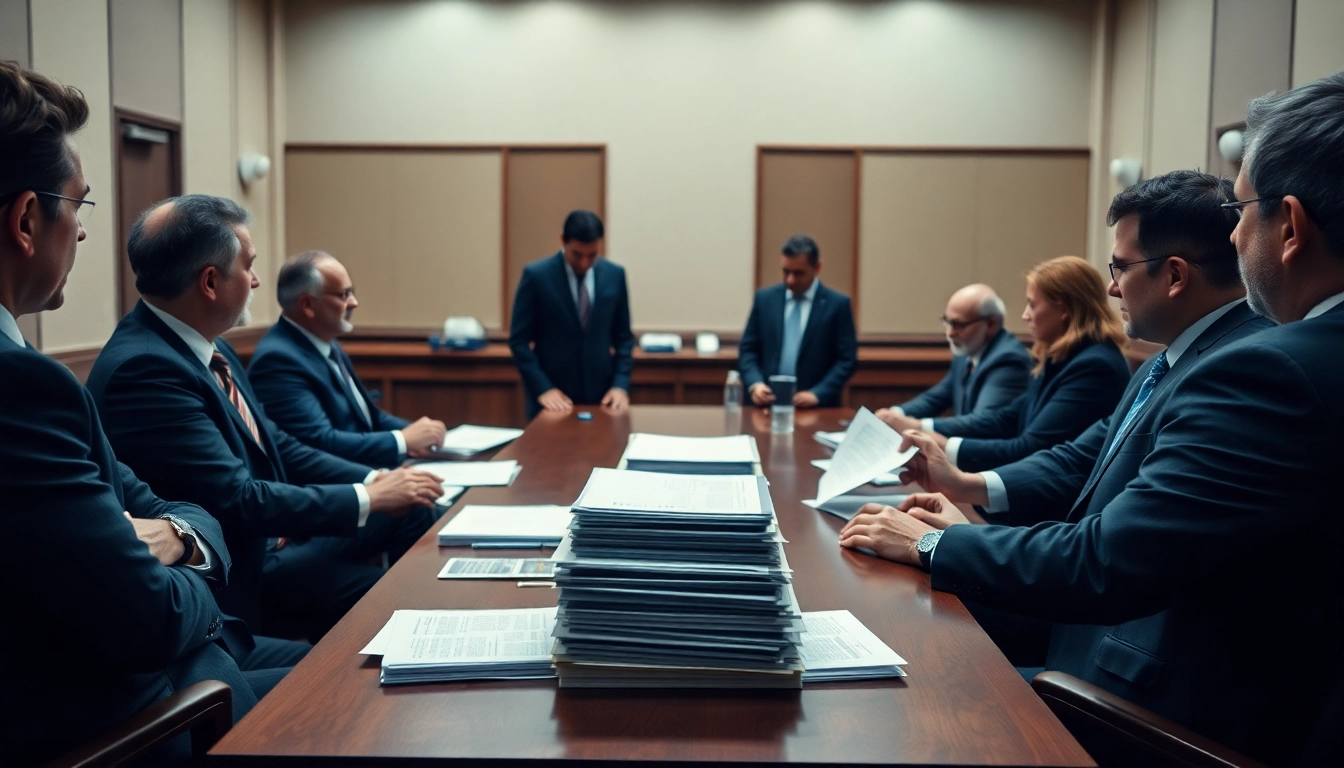Understanding Mass Tort Marketing
Mass tort marketing is a strategic approach aimed at promoting legal services for cases involving multiple claimants suffering damages from a single product or event. This complex area of legal practice requires not just a profound understanding of the law but also an adept marketing strategy to connect with potential clients effectively. As the legal landscape evolves, the essential strategies for mass tort marketing become increasingly sophisticated. The significance of targeted outreach and regulatory compliance cannot be overstated. For more elaborate insights into these strategies, visit Mass Tort Marketing, where legal practitioners can explore more about optimizing their marketing efforts.
What is Mass Tort Marketing?
Mass tort marketing refers to the process of attracting individuals who have experienced harm as a result of defective products, medical malpractice, environmental disasters, or other incidents that may lead to wide-scale legal claims. Unlike class actions, where a single lawsuit represents multiple claimants as a unified group, mass torts allow individuals to maintain their unique claims and seek compensation for their specific damages. This distinction necessitates a tailored marketing approach to reach potential clients and educate them on their options.
The Importance of Target Audience
In mass tort marketing, understanding the target audience is paramount. Legal practices must identify and segment their audience based on demographics, psychographics, and the nature of their claims. By employing data-driven methodologies, law firms can develop profiles of their ideal clients, understanding not only who they are but what concerns them most. This targeted approach enables more personalized communication that resonates with individuals, fostering trust and increasing the likelihood of converting inquiries into cases.
Key Challenges in Mass Tort Marketing
Despite its potential, mass tort marketing presents key challenges. One prominent obstacle is the saturated market where numerous firms compete for the same clientele. Standing out requires innovative strategies that highlight unique selling propositions. Additionally, legal practitioners must navigate the complexities of advertising regulations imposed by legal governing bodies, ensuring compliance while using ethically sound practices. Finally, the emotional burden carried by potential clients necessitates sensitivity in messaging without crossing the line into exploitative practices.
Building a Strong Mass Tort Marketing Strategy
Identifying High-Potential Cases
Identifying cases with high potential for mass tort claims is foundational to a successful marketing strategy. Firms must continuously monitor industries, products, and events linked to potential torts. For example, the rising concerns over pharmaceutical side effects or corporate negligence in manufacturing can signal opportunities for legal action. Establishing strong networks with medical professionals, regulators, and even news organizations can provide timely insights into emerging claims, allowing firms to position themselves proactively.
Developing Effective Marketing Messages
Creating compelling marketing messages is essential for resonating with potential clients. Messaging should focus on empathy, understanding the pain points of the target audience, and providing clear, actionable advice. Effective communication might emphasize success stories, outline the legal process, or highlight a firm’s dedication to fighting for justice. Additionally, integrating testimonials and case studies can bolster credibility, illustrating real-world results achieved by the firm.
Leveraging Digital Channels for Outreach
In today’s digital age, leveraging online channels is critical for mass tort marketing. A robust online presence through a well-optimized website, search engine optimization (SEO), and active engagement on social media platforms allows firms to reach a broader audience. Paid advertising strategies like Google Ads or social media ads can enhance visibility for high-potential cases. Moreover, content marketing, such as blogs and webinars, can establish authority and trust, providing educational value to potential clients navigating complex legal landscapes.
Case Studies: Success in Mass Tort Marketing
Review of Successful Campaigns
Examining successful mass tort marketing campaigns reveals successful tactics that can be leveraged by other firms. For instance, a notable case was a nationwide campaign focused on the harmful effects of a widely-used pharmaceutical drug. The firm utilized targeted online ads and informative blog content to create awareness and invite claims. They established a clear online form that made it easy for potential clients to reach out, resulting in a significant influx of inquiries and a growing database of potential cases.
Learning from Failed Marketing Efforts
Learning from failed marketing initiatives is equally vital. One law firm embarked on a broad advertising campaign that did not resonate with their target demographic, resulting in minimal engagement. Through analysis, they discovered that their messaging lacked emotional connection and did not address the specific grievances felt by potential clients. Hence, they revamped their strategy to focus on storytelling and client-centric communication, leading to improved outreach.
Metrics for Evaluating Success
Measuring the success of mass tort marketing campaigns is essential for ongoing improvement. Key performance indicators (KPIs) to track include the number of inquiries generated, conversion rates of leads into cases, client retention rates, and the effectiveness of different advertising channels. Additionally, tracking the cost per acquisition can help assess the financial viability of marketing efforts. Regularly analyzing these metrics enables firms to make informed adjustments to their strategies, maximizing return on investment.
Ethical Considerations in Mass Tort Marketing
Regulatory Compliance and Best Practices
Ethics play a crucial role in mass tort marketing. Legal practitioners must ensure compliance with advertising regulations and canons of ethics set forth by the American Bar Association and state bar associations. Transparency in communication, truthfulness in advertising, and refraining from misleading claims are fundamental best practices. Furthermore, obtaining informed consent for testimonial use can uphold ethical integrity while amplifying marketing campaigns.
Maintaining Client Trust
The foundation of any law firm’s practice is trust. Maintaining client trust in mass tort marketing is imperative, given the sensitivity surrounding legal claims. Firms should prioritize open lines of communication, offering potential clients thorough explanations of the legal process, anticipated timelines, and potential outcomes. Regular updates during the course of representation can further bolster this trust, ensuring clients feel informed and valued.
Responsible Communication Strategies
Responsive and responsible communication strategies are vital in mass tort marketing. Legal firms should adopt approaches that prioritize the emotional needs of clients, particularly those suffering from the ramifications of their claims. Messaging should be clear, compassionate, and devoid of hyperbole. Demonstrating understanding and providing realistic expectations can foster long-term relationships with clients, even beyond the arising mass tort claims.
Future Trends in Mass Tort Marketing
The Role of Technology
As technology evolves, its role in mass tort marketing expands accordingly. Innovations in data analytics enhance a firm’s ability to target the right audiences efficiently. Artificial intelligence (AI) tools can streamline client communications, analyze campaign effectiveness, and segment populations based on various parameters. With the promise of virtual reality and augmented reality applications, immersive experiences could become part of educating potential clients on their rights and claims.
Emerging Market Niches
Identifying and understanding emerging market niches can fuel mass tort marketing strategies. Growing concerns related to environmental issues, such as those surrounding toxic chemicals and natural disasters, have created specific focal points for potential mass tort cases. Additionally, the rise of technology-based vulnerabilities, including data breaches and privacy concerns, opens new avenues for legal action. By staying informed about such trends, firms can position themselves ahead of the competition.
Adapting to Legal Changes
The legal landscape is continually evolving, and mass tort marketing strategies must adapt accordingly. Changes in legislation, such as reforms to tort laws or shifts in consumer protection statutes, can greatly influence the types of cases that gain traction. Law firms should invest in ongoing education and training to remain aware of these changes and strategically pivot their marketing efforts as needed. Collaborating with legislative bodies and participating in legal advocacy can also provide insight into emerging trends and legal shifts.



